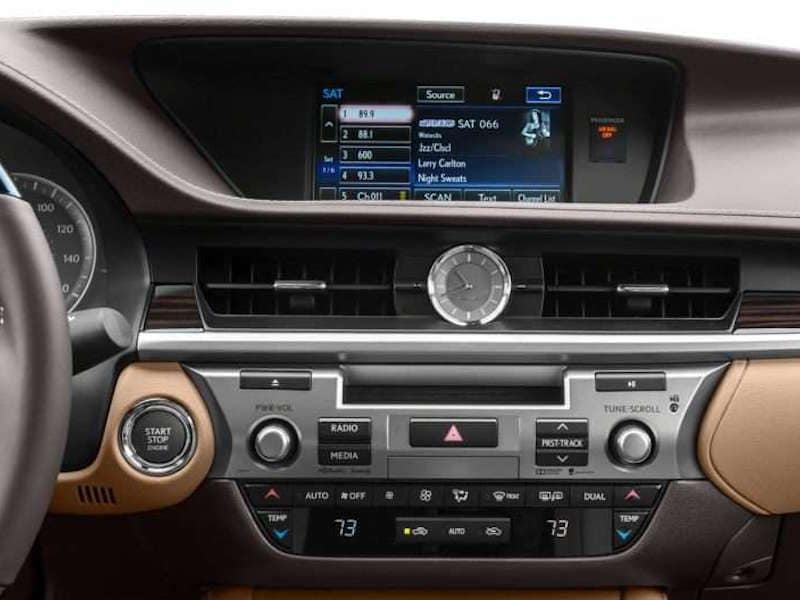Recent Articles
Popular Makes
Body Types
2016 Lexus ES 350 Road Test and Review
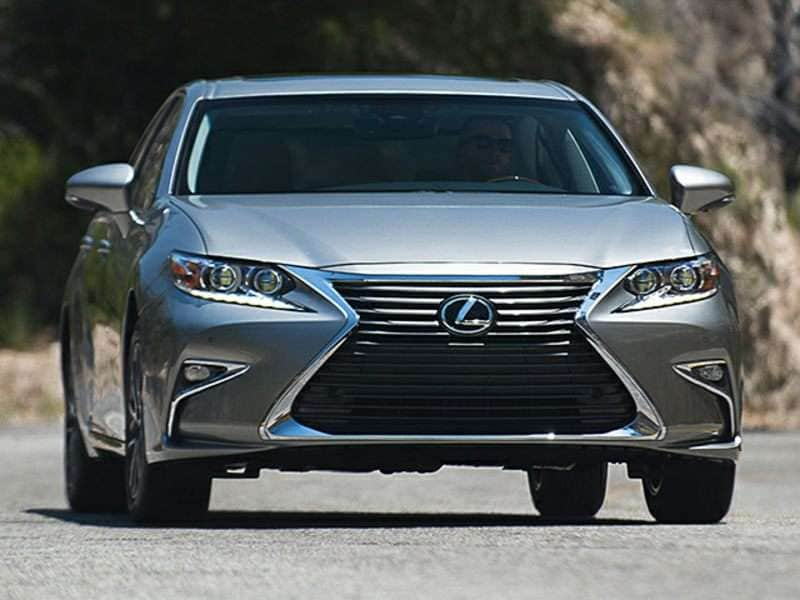
2016 Lexus ES 350 ・ Photo by Lexus
Car critics like us are supposed to be impartial, but like any human beings, we have our biases—and when it comes to luxury cars, we tend to like vehicles that are sporty and good fun to drive. That’s why the Lexus ES sometimes gets short shrift. True, the ES is no BMW; it’s based on mechanical bits developed for some of Toyota’s more humble cars (Lexus is a division of Toyota). But not everyone is looking for a luxury car that can set the pavement on fire. If you value a posh cabin and serene ride—and if you can appreciate that the use of more mundane mechanical bits from the Camry helps keep the price down—you’ll find the Lexus ES to be a very appealing luxury sedan.
Shaking Off Its Reputation
The ES dates back to Lexus’ launch in 1989; as a lower-priced alternative to the flagship LS400, Lexus offered the ES250, which was for all intents and purposes a dressed-up Toyota Camry. Lexus continued to develop the ES, further differentiating it from the Camry in terms of styling, interior design, features and content, though primary mechanical components were shared between the two cars, and the ES employed (and continues to employ) front-wheel-drive in the midst of a resurgence in rear-drive luxury cars. Despite broad differences in later versions—and there were many, including the interior layout and suspension setup—the ES has had a hard time shaking off its reputation as a glorified Camry. (For what it’s worth, today’s ES should more properly be called a glorified Avalon; it shares its wheelbase with Toyota’s larger sedan, though both vehicles are based on the Camry’s architecture.) Is this a bad thing? Not really, as we’ll discuss in the sections ahead.
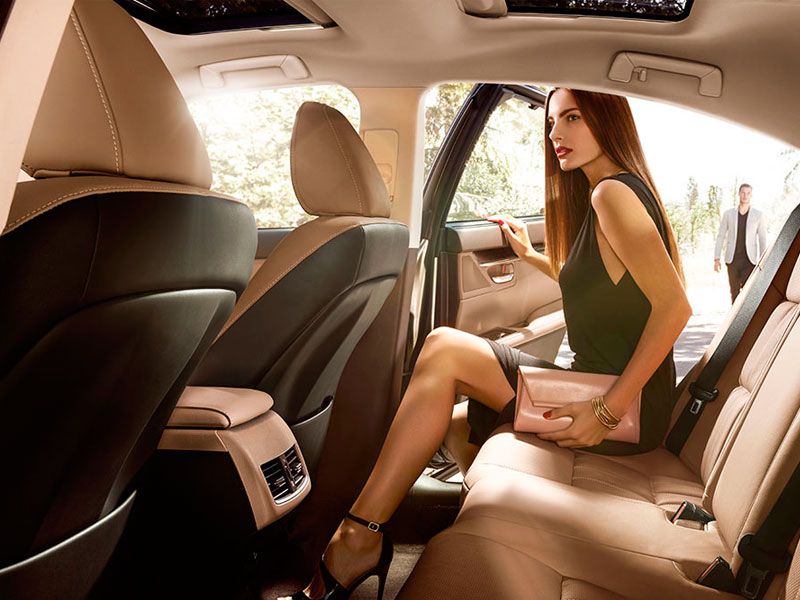
Photo by Lexus
A New Look for the ES
The year 2016 sees the first big update to the current ES since its 2013 clean-sheet redesign. The biggest change is the one-piece “spindle” grille that adorns other Lexus models and has stoked controversy among critics (some less polite folks have called it downright ugly). The grille fits the ES a little better than some other Lexus models, primarily because the 2013-2015 model was designed for an early version of the spindle motif split with a body-color bar at bumper height. Still, one can’t entirely escape the image of a gaping mouth attempting to eat the highway ahead of it, or at least pick bugs out of the air the way a baleen whale strains krill from seawater. Fortunately, the overall handsome shape of the 2016 Lexus ES250 is difficult to spoil.
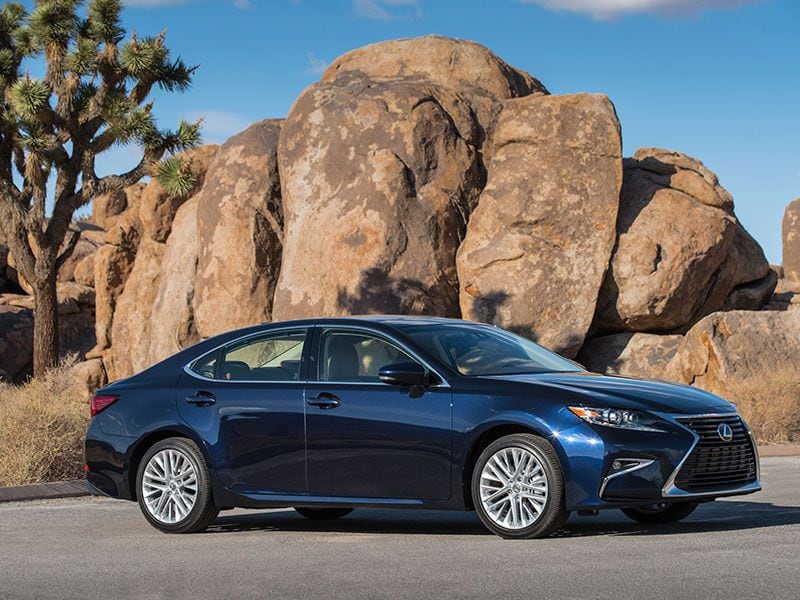
Photo by Lexus
Sharper Details, Better Colors
Other improvements to the Lexus ES350 for 2016 include all-LED headlights and fog lights moved to the outer edge of the bumper, which emphasizes the width of the car. Out back, the ES gets new taillights that show off the Lexus “L,” a very cool styling detail. The back bumper and wheels are new, and changes to the paint palette for 2016 allow the ES to get its color on: There’s less of an emphasis on muted tones than last year, with a brighter blue and a new metallic brown that allows the ES to shine in the sunlight.
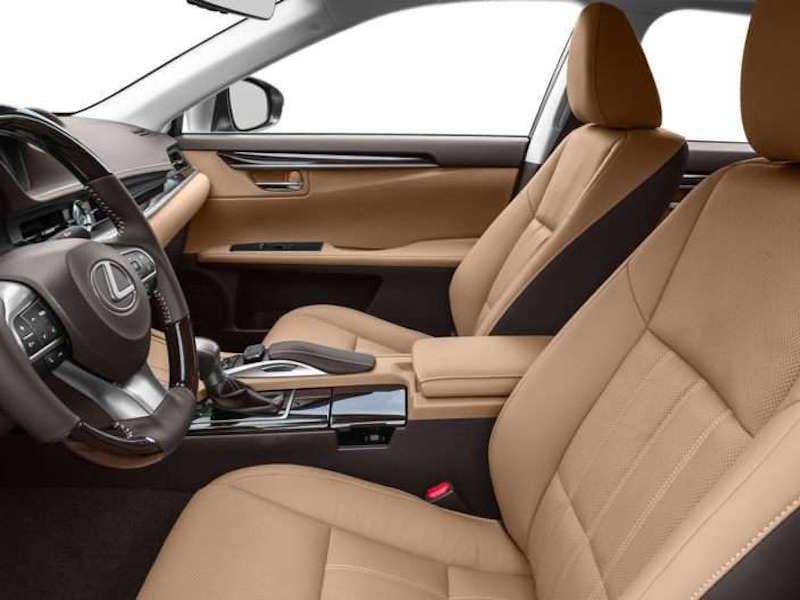
More Interior Choices
Inside, Lexus has expanded the ES’ interior choices: Whereas buyers last year could choose only from black, gray or tan, ES customers in 2016 now have an additional lighter beige. “NuLuxe,” Lexus’ convincing leather substitute, is the standard upholstery, with two grades of leather offered as options. Each interior color can be combined with three choices of trim (piano black, bird’s eye maple, linear wood or bamboo; specific availability varies by interior color). This is a great improvement: The ES’ interior styling has always been one of its high points, and we’re glad that ES buyers can now customize the look and feel of their car. Lexus has also expanded availability of the optional panoramic sunroof and 15-speaker Mark Levinson stereo system. The “mouse” style controller for the infotainment system remains; it’s intuitive once you get used to it, but Lexus buries some of the more commonly used functions under a layer of menus, which takes the driver’s attention away from the road.
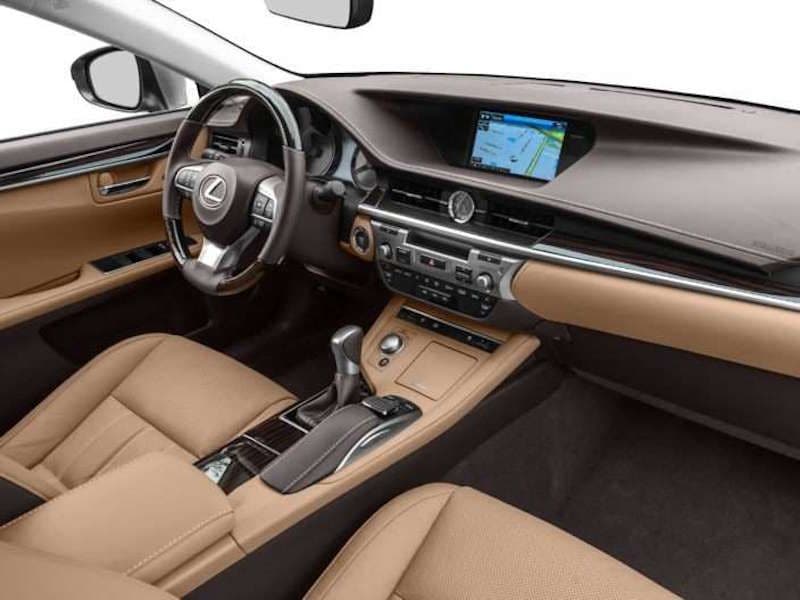
Safety for ES Owners
Lexus has always put an emphasis on safety-related driver aids; for the 2016 ES, Lexus is bundling them together in the Lexus Safety System+ Package. It combines adaptive cruise (which maintains a pre-set distance from the car ahead), lane departure warning and mitigation (if the ES starts to drift out of its lane, this system provides some light corrective steering), collision warning with automatic braking, and automatic high beams. Our one criticism of the package is that the adaptive cruise is not the latest-and-greatest full-stop systems; it doesn’t work below 25 mph. Blind-spot warning and rear cross-traffic alert are bundled as a separate option. Although the former is nice, the latter is a boon when backing out of a parking space; it can “see” cars coming down the aisle, even if they are blocked from the driver’s view.
For passive safety, the 2016 ES350 offers 10 airbags, including knee airbags for both driver and front passenger and torso airbags for front and rear seats. The ES’ crash tests scores are excellent: Five stars from the US government and top marks in all of the Insurance Institute for Highway Safety’s crash tests. It also earned an IIHS Top Safety Pick Plus rating.
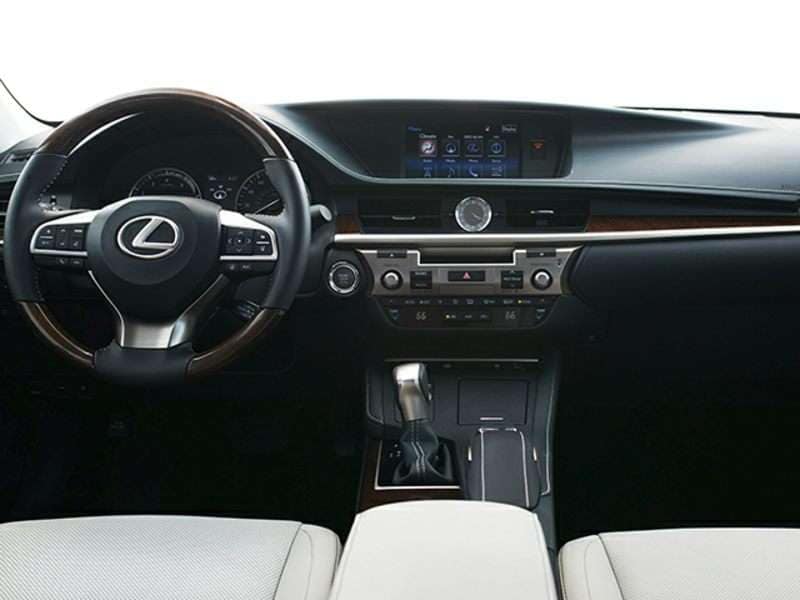
A Traditional V6 and a Frugal Hybrid
The 2006 Lexus ES350 is offered in two models, each with its own powertrain. The ES350 has a 268-horsepower 3.5-liter V6 and a 6-speed automatic transmission under the hood. Call it an old-tech powertrain if you like, but this V6 does what V6s do best: It delivers a smooth, even flow of power with minimal noise and vibration. EPA fuel economy figures are respectable, if not remarkable, at 21 mpg city, 31 mpg highway, 24 mpg combined. The car uses regular 87-octane gasoline. Better fuel economy comes courtesy of the 2016 Lexus ES300h hybrid, which is based around a 2.5-liter 4-cylinder engine. The 300h uses the same basic hybrid transmission as the Toyota Prius, with a combined system output of 200 horsepower. This is a proven gas/electric hybrid that delivers strong, smooth acceleration (albeit with the slightest hint of surge as the gas engine engages and disengages) and very respectable EPA fuel economy: 40 mpg city, 39 mpg highway, and 40 mpg combined. Owners report real-world figures around 38 mpg, an impressive number for a car this size.
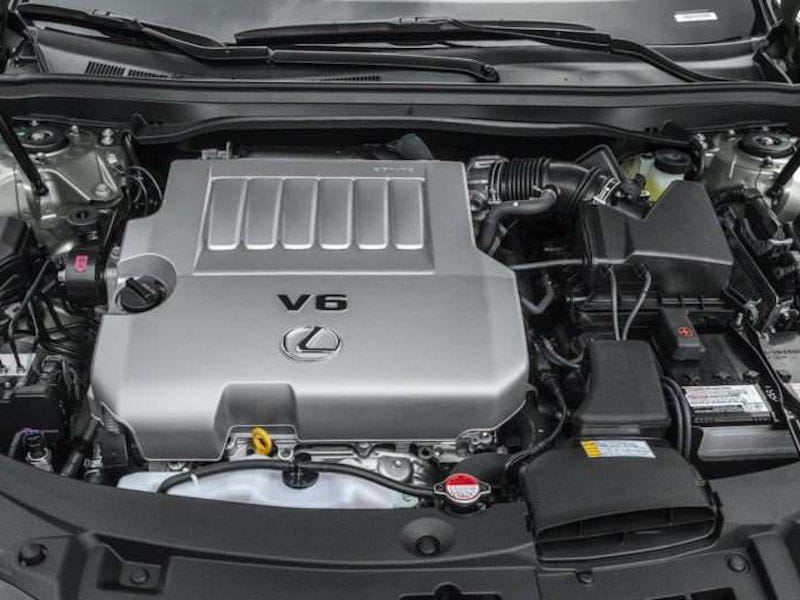
Handling: Good Enough
And what of the ES’ road manners? One of the complaints about the ES is its humble front-wheel-drive layout gives it less handling prowess than rear-drivers like the BMW 5 Series and Mercedes’ E-class. Lexus has been working to improve the image of its cars as stodgy handlers, but it’s worth noting that for all the improvements to the 2016 ES, there are only minimal suspension changes. Lexus previously stiffened the ride and tightened up the handling as part of the 2013 redesign, giving the ES better agility while retaining its library-quiet demeanor. It doesn’t surprise us that for 2016 Lexus has made only minimal changes. The 2016 ES350 is by no means sloppy; it steers nicely and handles quick panic swerves well. Although the ES is not the most thrilling way to race through the bends, the rear-drive IS and GS sedans, both of which have been greatly improved these past couple of years, are now serious contenders. The ES targets those who seeking a more serene ride, hence the humble front-wheel-drive mechanical bits—which, we should add, also allow for more space in the back seat and trunk.
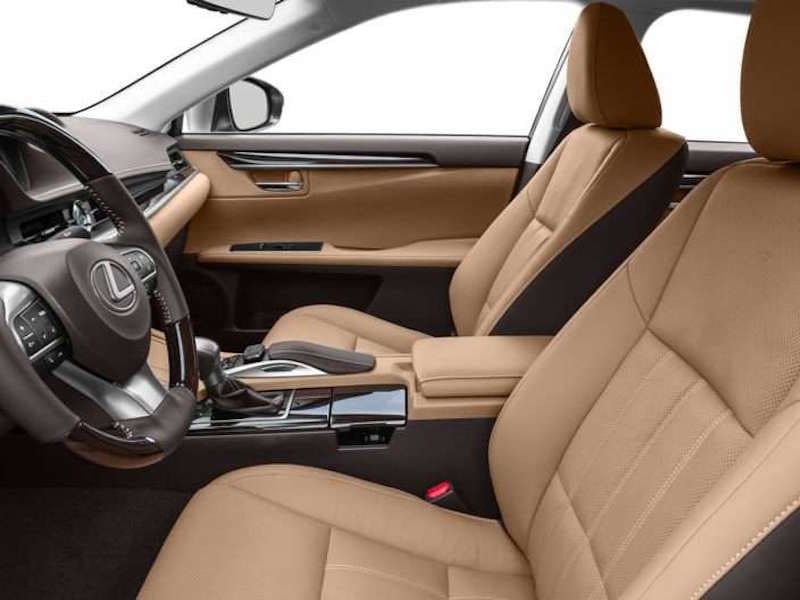
Lexus Keeps Option Costs Reasonable
Pricing for the 2016 Lexus ES350 starts at $39,050 (including destination charge), while the hybrid is priced at $41,970. That puts the ES in the same range as the smaller Mercedes C-Class and BMW 3 Series, but while these cars can get significantly more expensive once you pile on the options, the ES keeps those costs more reasonable, topping out at just over $50,000. We think that makes this Lexus an excellent buy among luxury cars its size. That said, we’d also recommend you consider the Hyundai Genesis Sedan (soon to be known as the Genesis G90), a larger rear-drive luxury car (and if the idea of cross-shopping a Lexus and a Hyundai sounds preposterous, trust us—you must go to a Hyundai dealership to check this car out). Fans of domestic brands might want to check out the slightly smaller (and lower priced) Lincoln MKZ—but keep in mind that the MKZ is built in Mexico, and as of 2016 the Lexus ES is built at Toyota’s plant in Kentucky, which has been churning out solidly constructed Camrys and Avalons since the late 1980s.
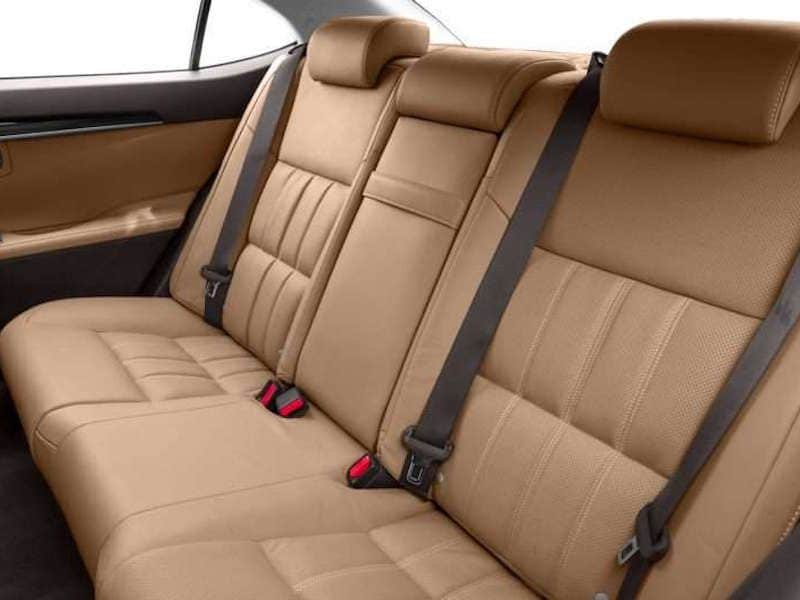
Photo by Lexus
Not a Thriller, But a Sensible Buy
We’ll freely admit that there are other luxury cars that do a better job igniting our passions than the Lexus ES. If racy handling is your first priority, you will want to consider other cars; we’d recommend Lexus’ own GS and the Audi A6 for starters. But if you’re looking for a car that prioritizes luxury and prestige, then the Lexus ES should be right at the top of your list. Here’s a car that will coddle you with its posh interior, impress the neighbors with its Lexus pedigree, and serve you faithfully with its Toyota build quality. The ES may not corner as quickly as a BMW 5 Series, but it won’t empty your bank account as quickly, either. In our impartial opinion, the Lexus ES is an excellent buy.
